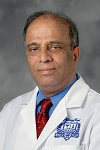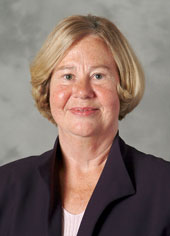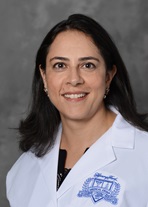History of the Division
The Henry Ford Division of Endocrinology, Diabetes, and Bone and Mineral Disorders holds roots from the early 1900s when the automotive leader Henry Ford first decided to build Henry Ford Hospital.
The early years
Frank Sladen, M.D., was the chief physician at Henry Ford Hospital in 1916. At this time in the medical field, there were no specialists. Dr. Sladen was joined by a group of physicians who divided up the potential specialty fields to be created for the hospital. These included Surgery (Dr. Roy McClure), Medicine (Dr. Frank Sladen), Obstetrics and Gynecology (Dr. Jean Paul Pratt, who was president of the Endocrine Society in the 1920s), and Pathology (Dr. Frank Hartman). Later, others joined the steadily enlarging physician staff.
Within the Department of Medicine, the Division of Metabolism formed in the early 1920s with Dr. Daniel Foster as first chief. He was joined by Dr. William Lowrie, who later became the second chief of Metabolism. At that time the Metabolism Division treated everything that was not cardio-respiratory, gastrointestinal, dermatology and syphilology, or general medicine (which then included rheumatology).
The mid years
By the mid-1950s, several new divisions within the Department of Medicine had been created. Dr. Richmond Smith (later chief of Medicine) was recruited from Cornell to start a Division of Endocrinology at Henry Ford. The Division grew to include thyroid specialist Dr. Martin Miller, recruited from the Mayo Clinic; Dr. Raymond Mellinger, who may be considered the first Endocrinology Fellow; followed closely by Dr. Saeed Zafar.

By the end of the 1950s, with the Division of Endocrinology established, the Metabolism Division thus concentrated primarily on diabetes, lipids, hypertension (a result of melding of the Hypertension Division with Metabolism) with general internal medicine included. Dr. Fred Whitehouse, after completing a fellowship at the Joslin Diabetes Center in Boston, joined the Metabolism Division under Dr. Lowrie and later became the third chief of Metabolism in 1962.

In parallel with these developing specialties of endocrinology and metabolism came the specializing of General Medical Clinic #5, led by Dr. Robert Durham and later by Dr. Boy Frame whose interests in calcium and bone diseases permitted evolution of the division into a Bone and Mineral Division, if not in name, surely in fact. Dr. Frame managed to recruit Dr. Michael Parfitt from England via Australia and Dr. Michael Kleerekoper from St. Louis. At this time Dr. D. Sudhaker Rao and later Dr. Malachi McKenna joined the group as Fellows and later as staff. Much of this interest was sustained by Dr. Harold Frost, chief of Orthopedics, who had great vision and interest in the pathogenesis of bone diseases. The clinical research work of this division became well known nationally.

In 1985, Dr. Mellinger was chief of Endocrinology, Dr. Whitehouse chief of Metabolism, and Dr. Frame chief of Bone and Mineral Disorders. When Dr. Frame became chief of the Department of Medicine that year, the divisions of Endocrinology and Metabolism conjoined, with Dr. Whitehouse as chief, and later the specialty of Bone and Mineral Disorders merged into the Division as well. In 1995, Dr. Dorothy Kahkonen became chief of the Division of Endocrinology and Metabolism, which included the section of Bone & Mineral Disorders.
The 21st century

In October 2006, Dr. Abraham Thomas was recruited from Brigham and Women's Hospital and Harvard Medical School to take over as chief of the aptly renamed Division of Endocrinology, Diabetes and Bone and Mineral Disorders.

In 2014, Dr. Arti Bhan became Division Head of Endocrinology. Dr. Bhan completed her fellowship in Endocrinology at Henry Ford Health and has been a senior staff physician at Henry Ford since 2003. She is active in clinical research and is an investigator in numerous trials, including NIH funded studies. She is published in peer reviewed literature and is the Associate Editor for Clinical Diabetes. Under Dr. Bhan’s leadership, the Division remains among the most experienced in Michigan and the US in the areas of complex endocrine conditions, diabetes, thyroid disorders, pituitary disease, adrenal disease, and osteoporosis.
Throughout its history, the Division has pursued active research. The Division was an early group to use insulin pumps in the state of Michigan. In addition, the Division was involved in some of the earliest studies of human insulin in the United States. The Division was the largest site for one of the most important diabetes trials of the 20th Century, the Diabetes Control and Complications Trial, led by Dr. Whitehouse at the Henry Ford site. Ms. Davida Kruger was the national trial coordinator for all the U.S. clinical sites. Ms. Kruger and Dr. Whitehouse are both former Presidents of the American Diabetes Association.
In the area of thyroid disease, one of the pivotal papers published in JAMA establishing fine needle aspiration as the preferred way to determine the presence or absence of malignancy in the thyroid was conducted at Henry Ford Hospital with Dr. Sudha Kini in cytopathology and Dr. Martin Miller in endocrinology as the lead authors.
Today, the Division continues to be a leader in clinical trials in the area of diabetes, cardiovascular diseases, and bone disorders participating in National Institutes of Health clinical trials such as ACCORD, BARI-2 and EDIC.
.svg?iar=0&hash=F6049510E33E4E6D8196C26CCC0A64A4)
/hfh-logo-main--white.svg?iar=0&hash=ED491CBFADFB7670FAE94559C98D7798)